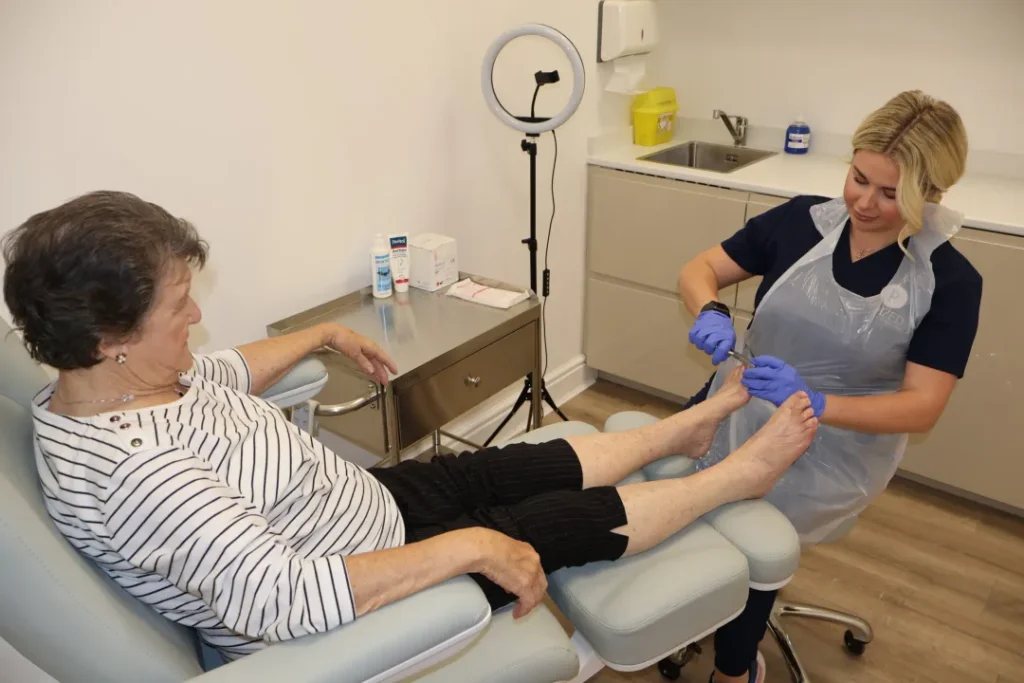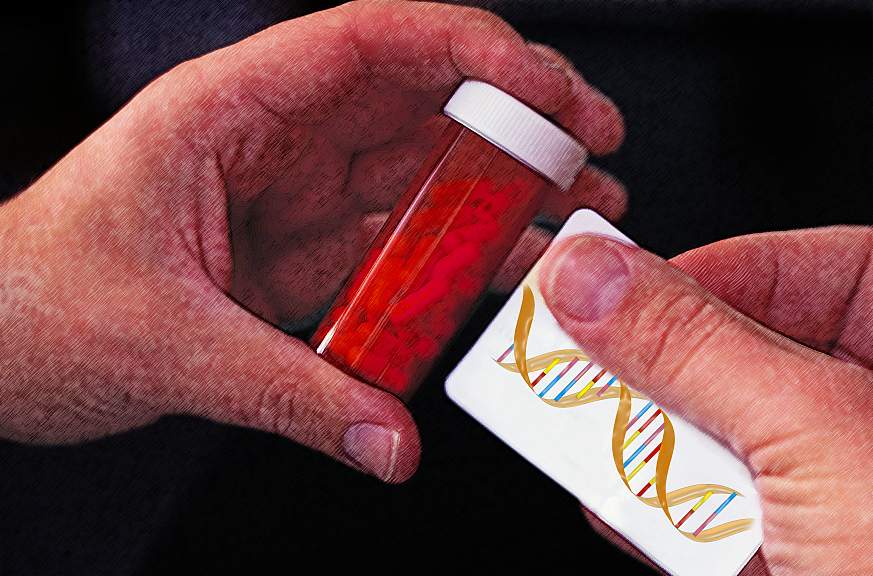Diabetes is a growing global health concern, affecting millions of people and often leading to serious complications such as diabetic foot ulcers. These ulcers are painful, slow to heal, and potentially life-threatening if not properly managed. As a result, the medical community has been working tirelessly to develop more effective treatments. The future of diabetic wound care is incredibly promising, with a surge of innovations aimed at improving healing times, reducing infection risks, and enhancing patient quality of life.
In this article, we explore the latest advancements, from cutting-edge therapies to technological breakthroughs, that are set to redefine how diabetic wounds are treated in the coming years.
The Growing Need for Advanced Diabetic Wound Care
Diabetic foot ulcers are one of the most challenging complications of diabetes, affecting around 15% of diabetic patients at some point in their lives. These wounds are notoriously difficult to heal because of poor circulation, nerve damage (neuropathy), and a weakened immune response. For many patients, what begins as a minor sore can escalate into a serious infection, sometimes leading to limb amputation if not treated quickly and effectively.
The future of diabetic wound care is focused on developing treatments that address the underlying causes of poor healing, enhance tissue regeneration, and provide real-time monitoring of wound progress. This forward-thinking approach is essential as the number of diabetic patients worldwide continues to rise.
Bioengineered Skin Substitutes: A New Frontier
One of the most exciting areas of advancement is the development of bioengineered skin substitutes. These products are designed to mimic natural skin and provide a scaffold that encourages cell growth and tissue repair. Unlike traditional dressings, bioengineered skins actively participate in the healing process by secreting growth factors and promoting vascularization.
Several FDA-approved skin substitutes are already in use, and researchers are continually improving their effectiveness. In the future, these products may become even more advanced, incorporating patient-specific cells or smart materials that respond dynamically to the wound environment.
Growth Factor Therapy: Stimulating Natural Healing
Another promising avenue in the future of diabetic wound care is the use of growth factor therapy. Growth factors are naturally occurring proteins that play a critical role in cell proliferation and tissue regeneration. Scientists are developing topical gels, sprays, and injectables that deliver concentrated growth factors directly to the wound site, jumpstarting the body’s natural healing response.
Although some growth factor treatments are already available, future innovations aim to enhance their stability, bioavailability, and effectiveness, offering hope for faster and more complete wound closure.
The Role of Stem Cell Therapy
Stem cell therapy is making waves across many medical disciplines, and diabetic wound care is no exception. Stem cells have the unique ability to differentiate into various cell types, making them ideal candidates for regenerating damaged tissue. In recent studies, stem cell treatments have shown promise in improving wound healing rates, reducing inflammation, and restoring blood flow.
The next frontier involves refining delivery methods—such as injectable stem cells or stem cell-infused dressings—and ensuring these therapies are both safe and effective for widespread clinical use. The future of diabetic wound care will likely include stem cell therapy as a key component of personalized treatment plans.
Smart Dressings: Monitoring and Healing Simultaneously
Imagine a wound dressing that not only covers the wound but also monitors its condition in real-time. Smart dressings are an emerging innovation that integrates sensors to track moisture levels, bacterial load, and pH balance. Some prototypes even include drug-delivery systems that can release antibiotics or anti-inflammatory agents as needed.
These intelligent dressings provide clinicians with valuable data, allowing for more precise and timely interventions. As technology advances, we can expect smart dressings to become more sophisticated, affordable, and widely available, transforming the way we monitor and manage diabetic wounds.
Hyperbaric Oxygen Therapy: A Breath of Fresh Air
Hyperbaric oxygen therapy (HBOT) is a treatment that involves breathing pure oxygen in a pressurized chamber. This therapy increases the amount of oxygen in the blood, which can stimulate tissue repair, reduce inflammation, and combat infection. While HBOT is already used in some cases of diabetic wound care, researchers are exploring ways to make it more effective and accessible.
Newer studies are focusing on combining HBOT with other treatments, such as growth factors or stem cell therapy, to maximize its healing potential. The future may see portable or more cost-effective hyperbaric solutions that make this powerful therapy available to a broader range of patients.
Gene Therapy: Reprogramming Healing at the Molecular Level
Gene therapy is a cutting-edge field that aims to address medical issues by altering genetic material within a patient’s cells. In diabetic wound care, gene therapy has the potential to correct the underlying molecular defects that hinder healing. Early research suggests that delivering specific genes can stimulate tissue repair, enhance blood vessel formation, and reduce inflammation.
Though still in its experimental stages, gene therapy represents a revolutionary step forward. As scientists continue to refine these techniques, the future of diabetic wound care may include gene-based solutions tailored to each patient’s unique genetic makeup.
Telemedicine and Digital Wound Care Platforms
The COVID-19 pandemic accelerated the adoption of telemedicine across all medical fields, including podiatry and wound care. Digital platforms now allow patients to consult with podiatrists remotely, share images of their wounds, and receive real-time guidance on wound management.
As technology improves, these platforms will likely become more advanced, featuring AI-driven wound assessments, automatic alerts for complications, and seamless integration with smart dressings. The future of diabetic wound care is not just about new treatments—it’s also about improving accessibility and convenience for patients.
Personalized Medicine: Tailoring Treatment to the Individual
One of the most exciting trends in modern healthcare is personalized medicine—designing treatment plans based on a patient’s unique characteristics, such as their genetics, lifestyle, and medical history. This approach is particularly valuable in diabetic wound care, where no two wounds are exactly alike.
In the future, podiatrists may use a combination of genetic testing, biometric data, and advanced imaging to create highly individualized care plans. This level of precision could dramatically improve healing outcomes and reduce the risk of complications.
Conclusion: A New Era of Hope for Diabetic Patients
The future of diabetic wound care is bright, thanks to a wave of innovations that promise faster healing, fewer complications, and better quality of life for patients. From bioengineered skins and stem cell therapy to smart dressings and gene editing, these advancements are transforming the landscape of wound care.
At Garden State Foot & Ankle Group, we are committed to staying at the forefront of medical innovation, ensuring that our patients benefit from the latest and best treatments available. We believe that with continued research, collaboration, and compassionate care, diabetic wound healing will become safer, faster, and more effective than ever before.
Contact Garden State Foot & Ankle Group
If you or a loved one is dealing with a diabetic foot wound, don’t wait—early intervention is key to successful healing. Contact our expert team today to learn more about advanced diabetic wound care options.
Toms River Office
📍 664 Commons Way Building 1
Toms River, NJ 08755
📞 Phone: (732) 557-9900
📧 Email: gsfagroup@gmail.com
Belleville Office
📍 1 Clara Maas Drive
Belleville, NJ 07109
📞 Phone: (973) 450-3035
🌐 Website: gsfagroup.com



0 Comments